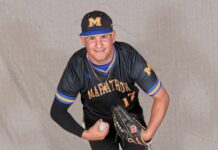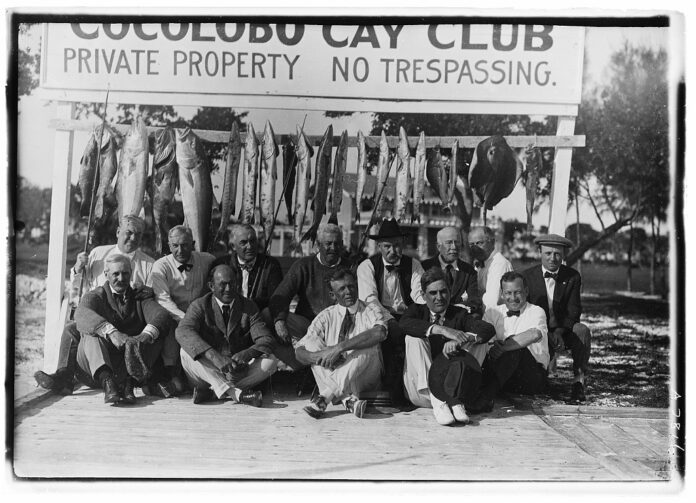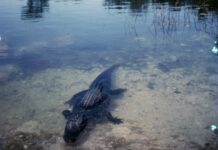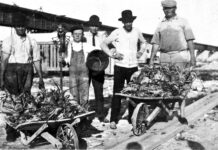Carl Fisher was synonymous with land development in South Florida during Florida’s land boom in the 1920s. He also knew a thing or two about promotion.
When he learned that president-elect Warren Harding would be visiting South Florida, Fisher sent his secretary, Ann Rossiter, to invite him personally to Miami Beach. Fisher understood that Harding had a penchant for beautiful women, and Rossiter (with whom Fisher was having an affair at the time) certainly qualified as a beauty. When she knocked on the door at his Marion, Ohio, home, she was let right in and visited with Harding in his study.
Fisher wanted to show off his Miami Beach development, and the ploy was successful. When Harding arrived in Miami, Fisher ushered him onto his cruiser and sped off for Miami Beach’s Flamingo Hotel. During his visit, Harding enjoyed some golf with a unique caddy to carry his clubs that was provided by Fisher. The caddy was Rosie, his pet elephant. Pictures of the event were published nationwide and, from there, word of Miami Beach entered the national consciousness.
Fisher also brought Harding to the Cocolobo Cay Club at Adams Key, which, at the time, was one of the most secluded clubs in the country and the perfect place for the president-elect to disappear from the public eye. Captain Charles H. Thompson was brought down to Adams Key to take Harding fishing. Thompson operated his charter fishing out of Miami Beach, where he had guided English lords, dukes and French nobility. Fishing the president-elect was right up his alley. Thompson later moved to the Middle Keys and became one of Marathon’s fishing legends.
Harding was not the last president to visit the club, and Thompson was not the only local fishing legend to serve as a fishing guide at the club. The Jones brothers were also legendary figures around the local waters. They grew up in the northern Keys, where their family owned several of the islands, including Porgy Key, where the two boys lived. Lancelot and Arthur were skilled fishermen who knew the local waters as well as they knew each other. In addition to catching fish for sport, the brothers fished commercially, harvesting lobster and stone crab they supplied to the Cocolobo Cay Club.
In the late 1920s, the prestigious and private Cocolobo Cay Club boasted 46 members. In 1929, Black Tuesday arrived, the stock market crashed, and hard times fell on the club’s members, some of whom stopped paying their dues. Garfield “Gar” Wood, who made his money in truck and tractor manufacturing but made his reputation as a champion speed boat racer, bought the property in 1934 after it fell on hard times.
In 1935, the Jones brothers began working for the club’s new owner. While Wood operated the club, Lancelot and Arthur Jones worked on the club’s docks and used their considerable knowledge of the local waters to guide its members. According to Lancelot Jones, his clientele included Daniel Topping, who once owned the New York Yankees; and presidents Herbert Hoover, Lyndon B. Johnson, John F. Kennedy and Richard Nixon – though some of those men fished at the club before being elected.
Wood owned Adams Key and the Cocolobo Cay Club for longer than Carl Fisher and his investors, but Fisher and the club’s heyday are the years for which it is best remembered. Wood, however, was not the island’s last private owner. He sold his interests in Adams Key to a group of men headed by a long-time friend of Richard Nixon, Bebe Rebozo, in 1953. The club continued to operate with Rebozo at the helm for a time, but the sun had already begun to set on the Cocolobo Cay Club.
In early September 1965, Hurricane Betsy came barreling toward South Florida. On Sept. 8, the Category 3 storm blew across Key Largo. In the northern Keys, wind and storm surge inundated the islands. While Adams Key, with an elevation of 16 feet, withstood the surge, the powerful winds damaged the clubhouse and other buildings on the island. However, Betsy’s were not the only winds of change blowing across the northern Keys. There was also talk of the government creating the Biscayne National Monument, the precursor to Biscayne National Park.
One of the Cocolobo Cay Club’s former visitors, President Lyndon B. Johnson, signed the bill that created the monument on Oct. 18, 1968. On July 15, 1969, rangers from the park service visited Adams Key and noted that the island’s buildings remained badly damaged from the 1965 hurricane. Rebozo ended up selling Adams Key to the government and did so for a handsome profit. When it came time to sign the paperwork, the initial sale price of $500,000, a number already above the market value for the island, was scratched out, and a new number was written in. The final price for Adams Key was $550,000.
The old, dilapidated club that once catered to the nation’s elite burned down on Dec. 21, 1974. Some of the club’s auxiliary buildings, including the caretaker’s residence and the “casino” building used by members for cards and other games, were rehabilitated by the park service, but were destroyed by Hurricane Andrew in 1992. Today, the island serves as a picnic area in Biscayne National Park.


























